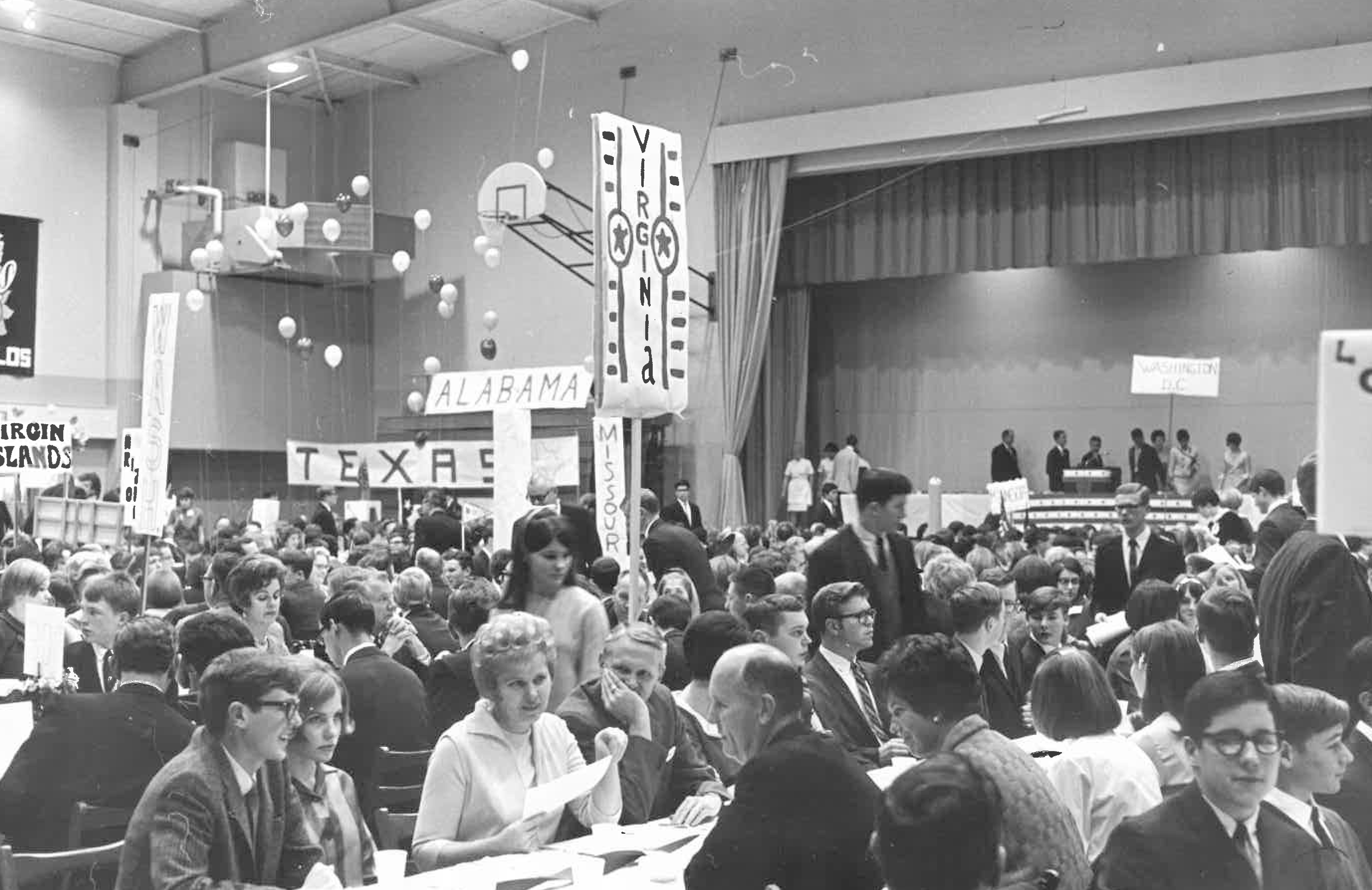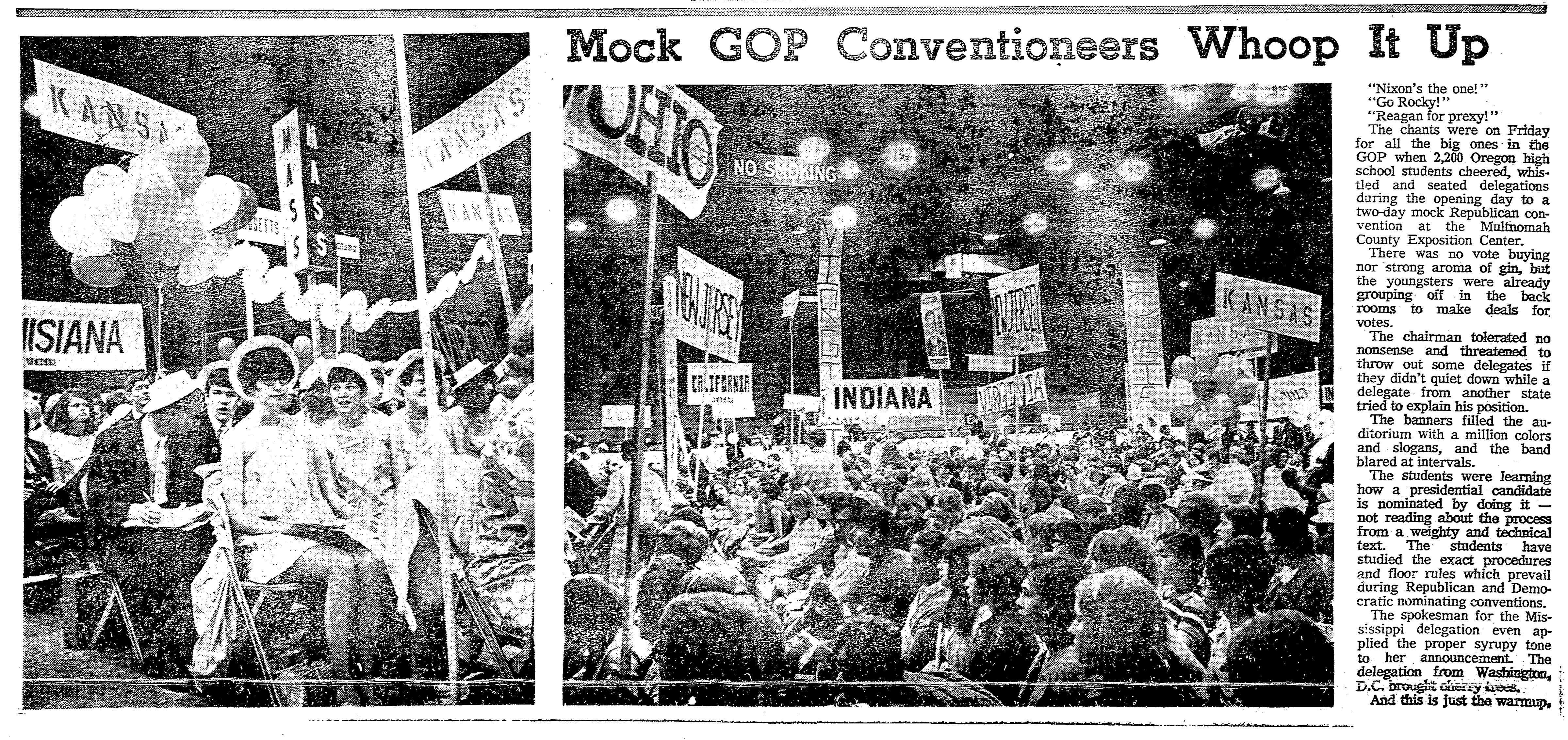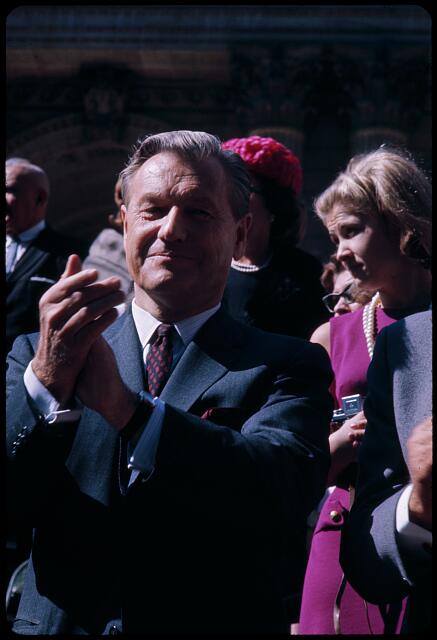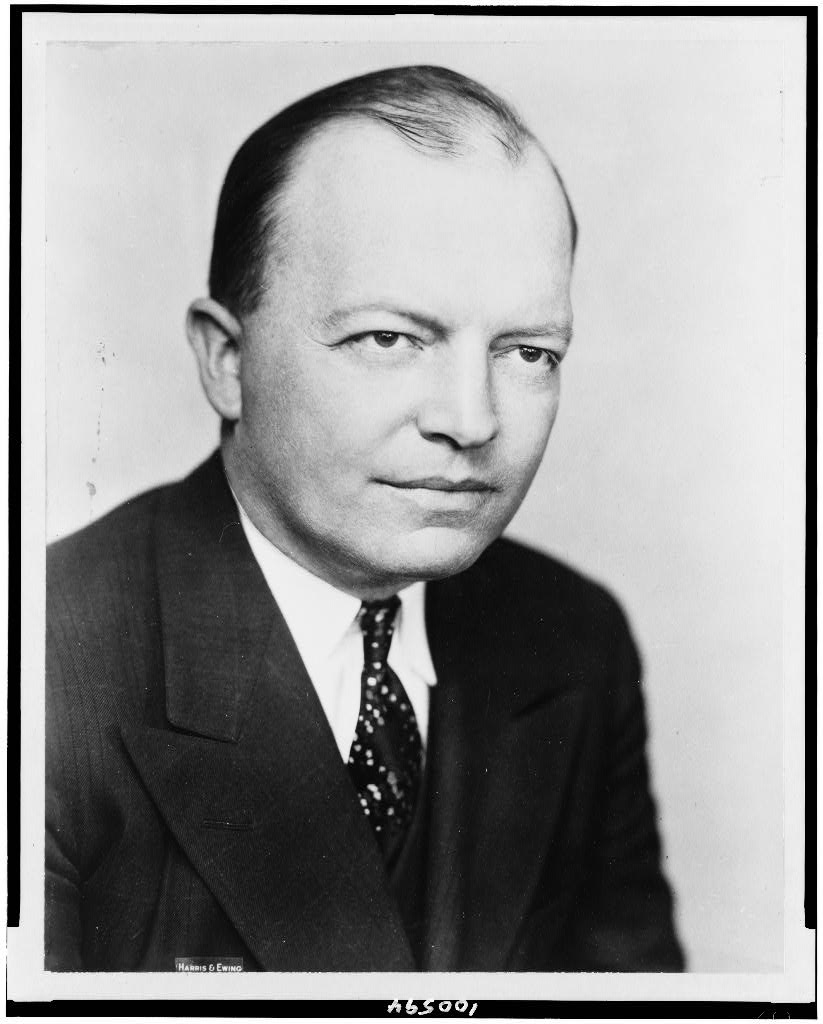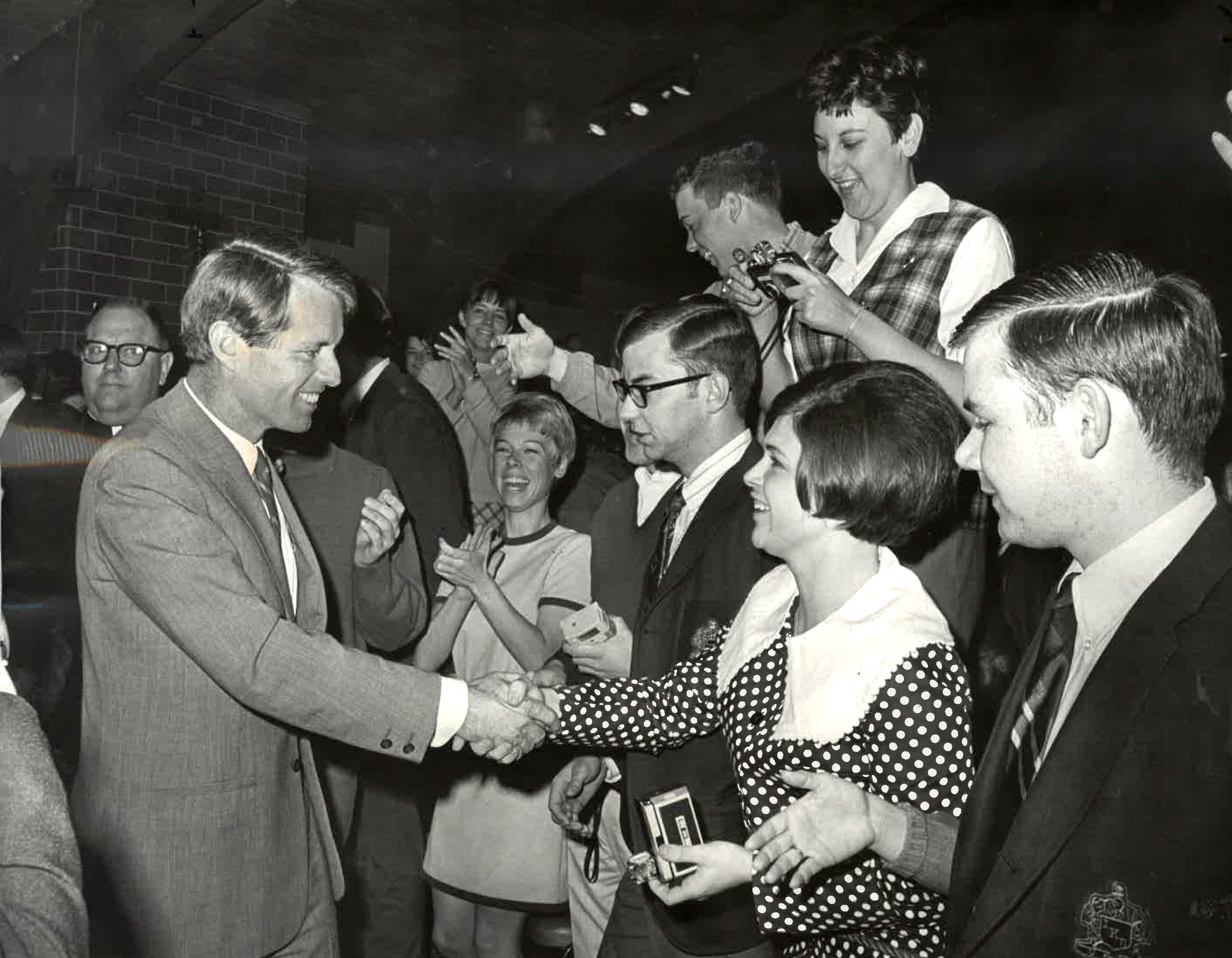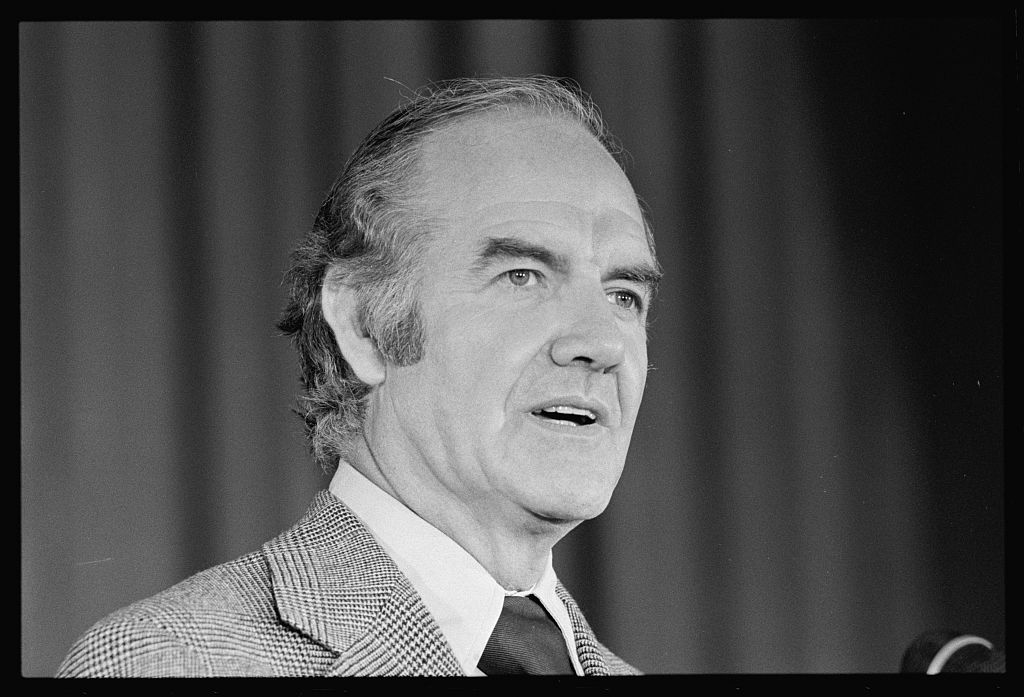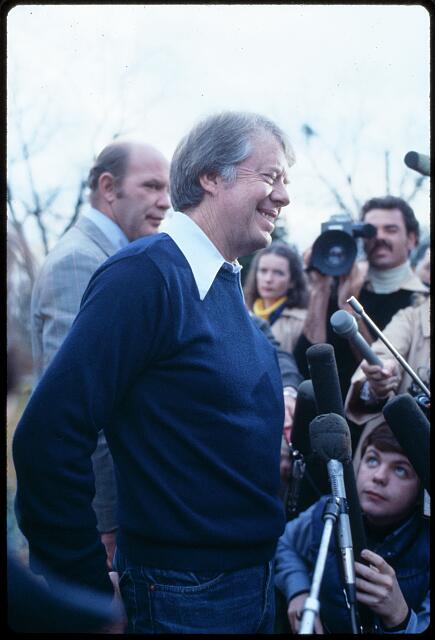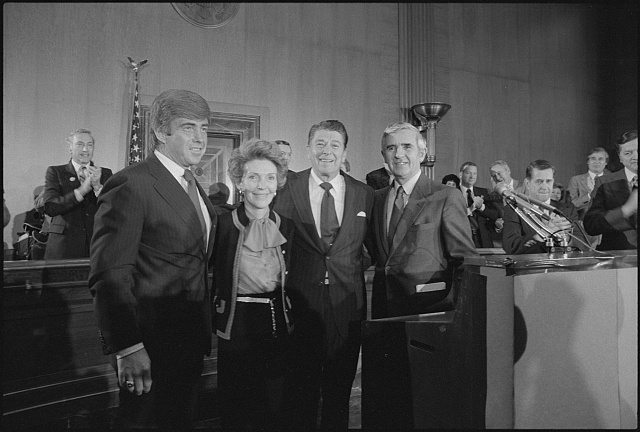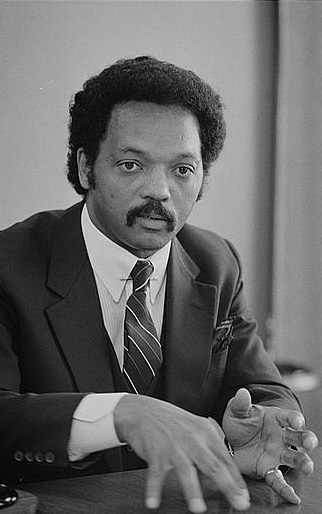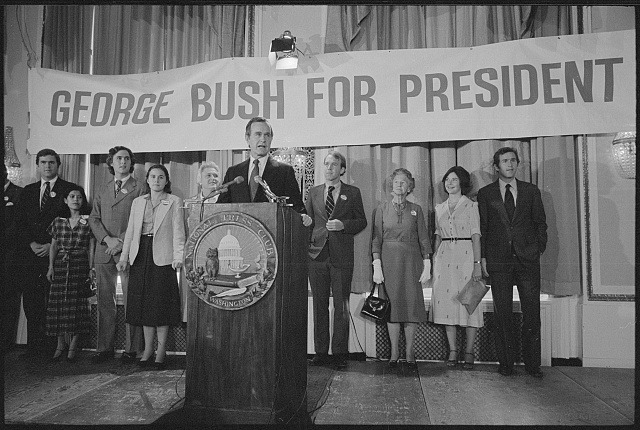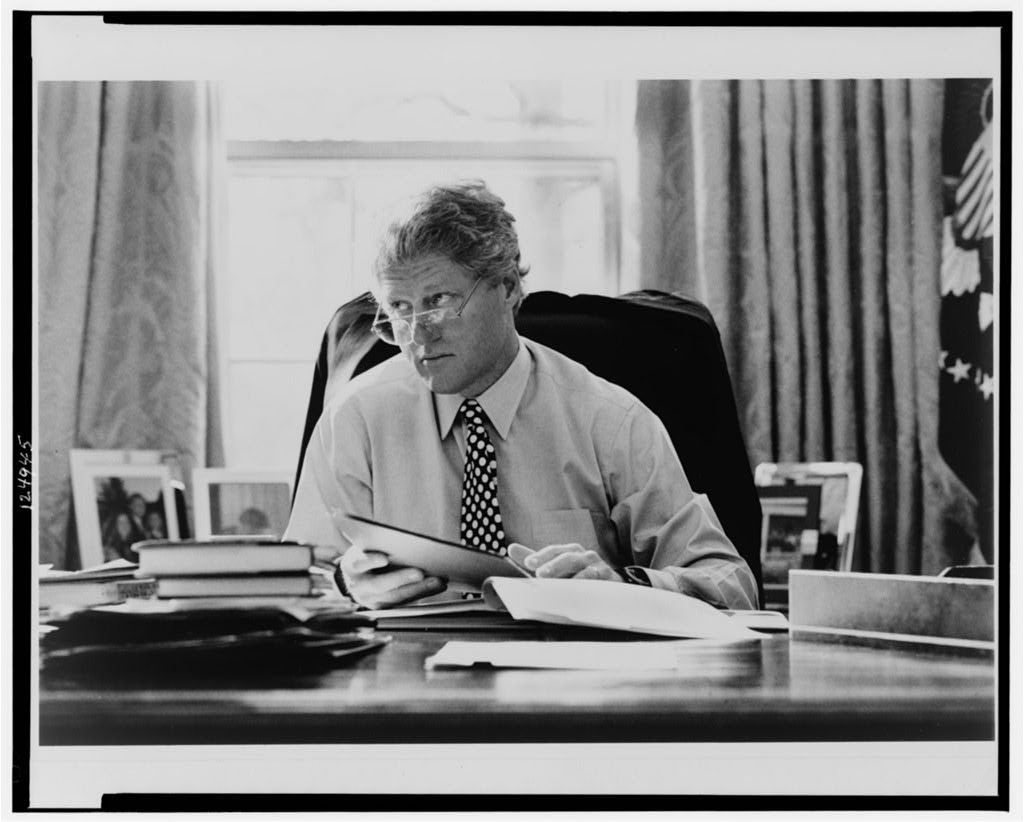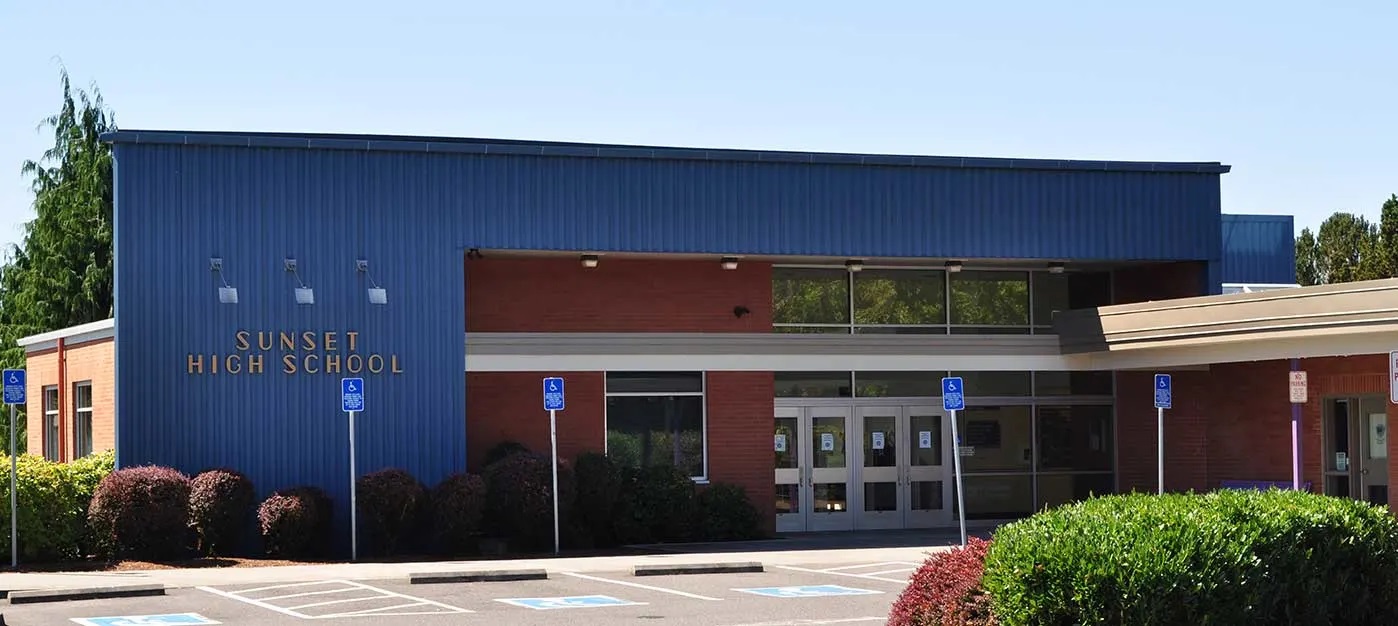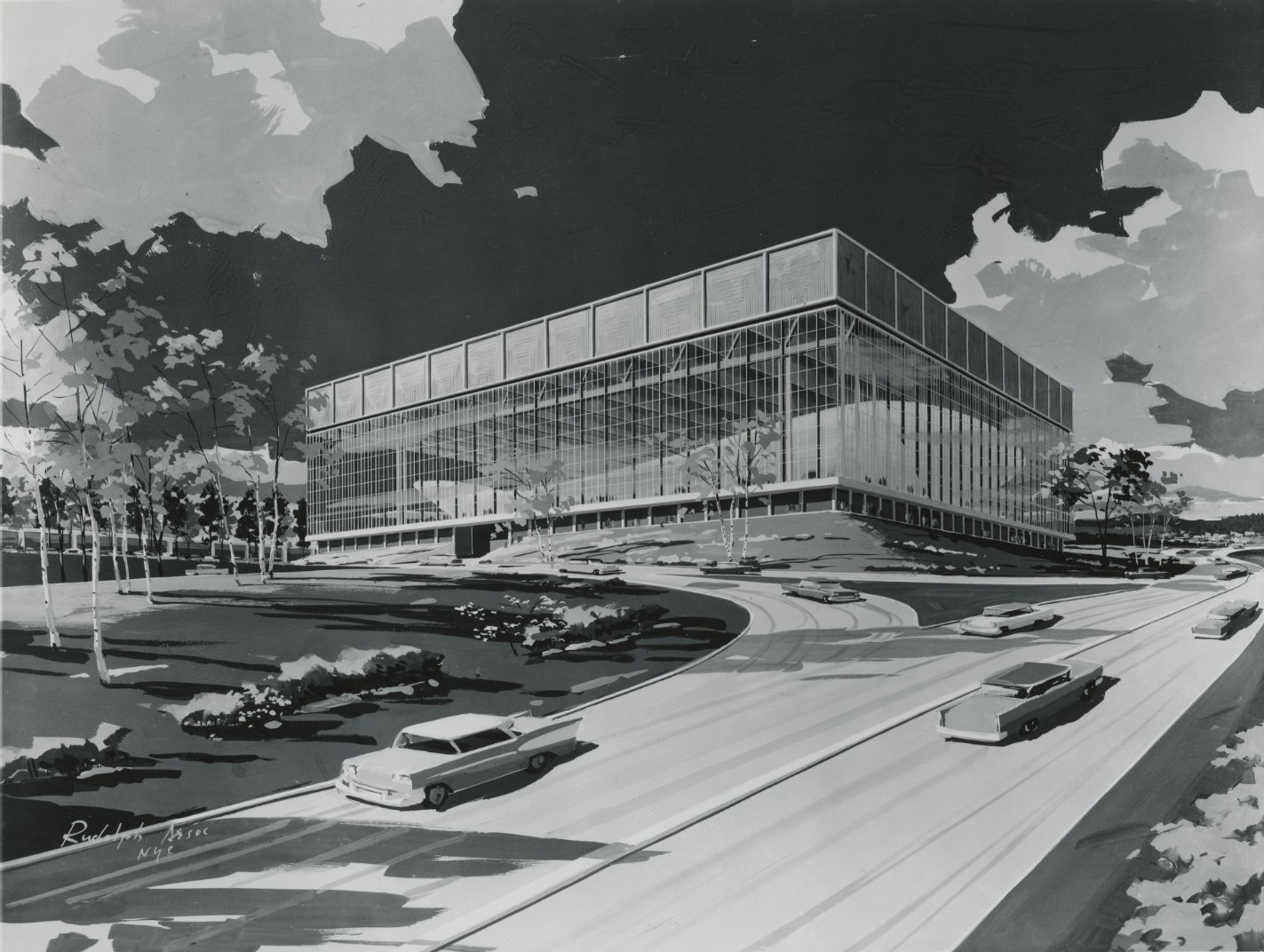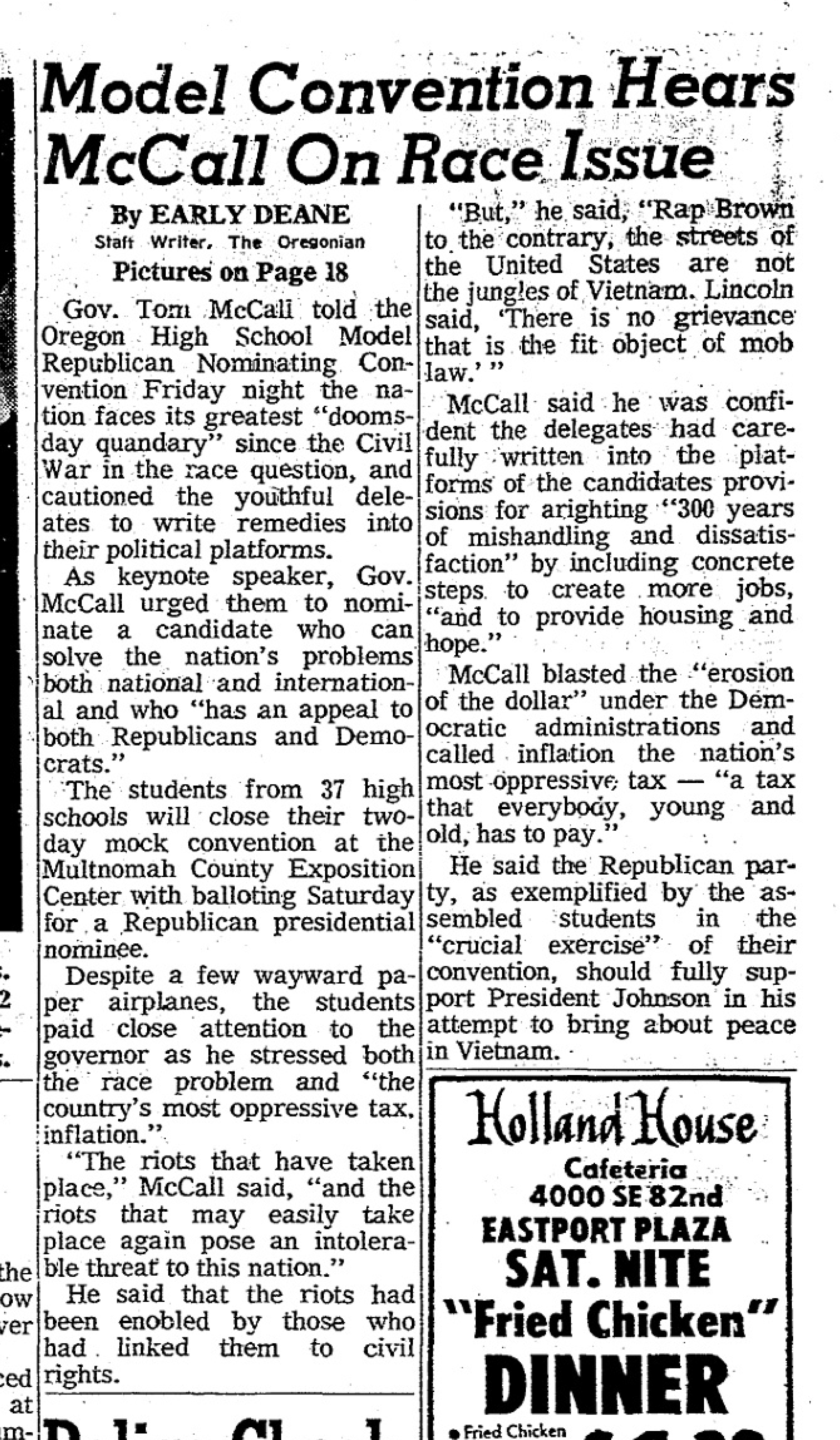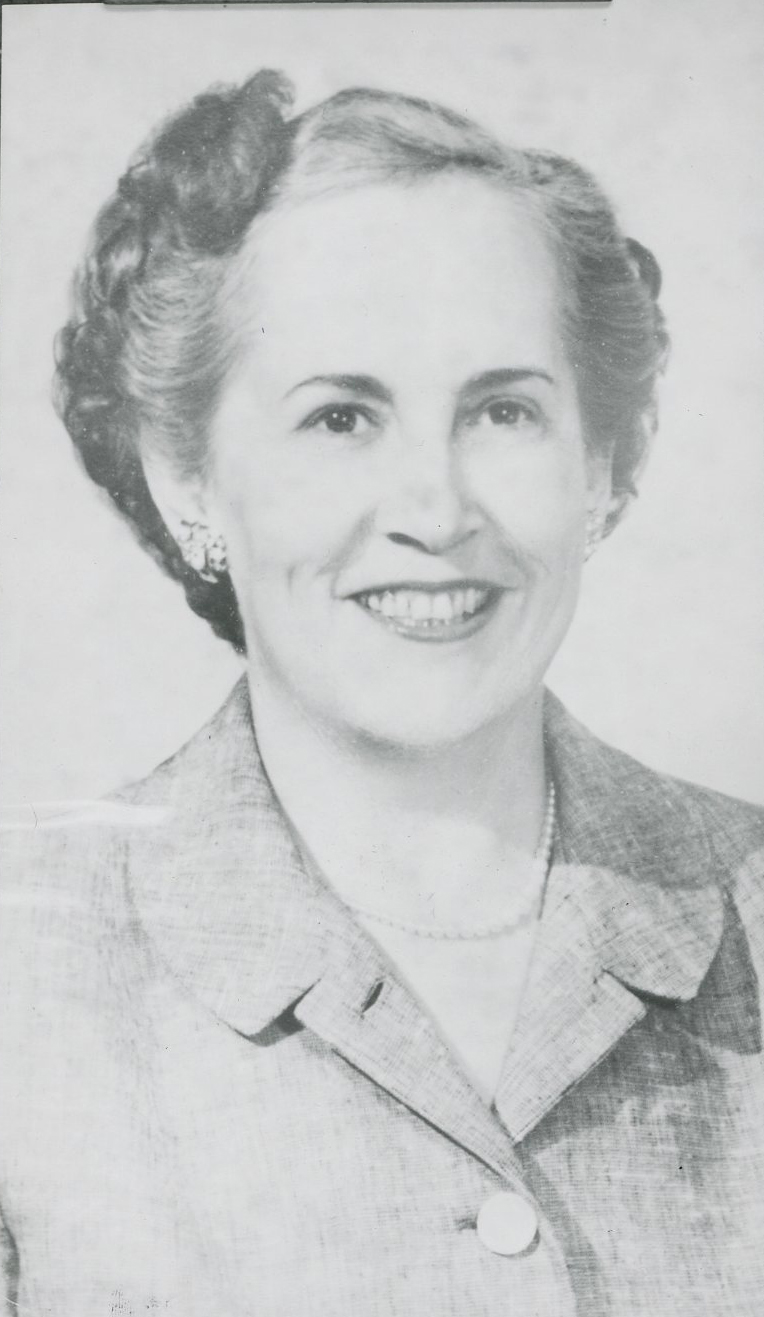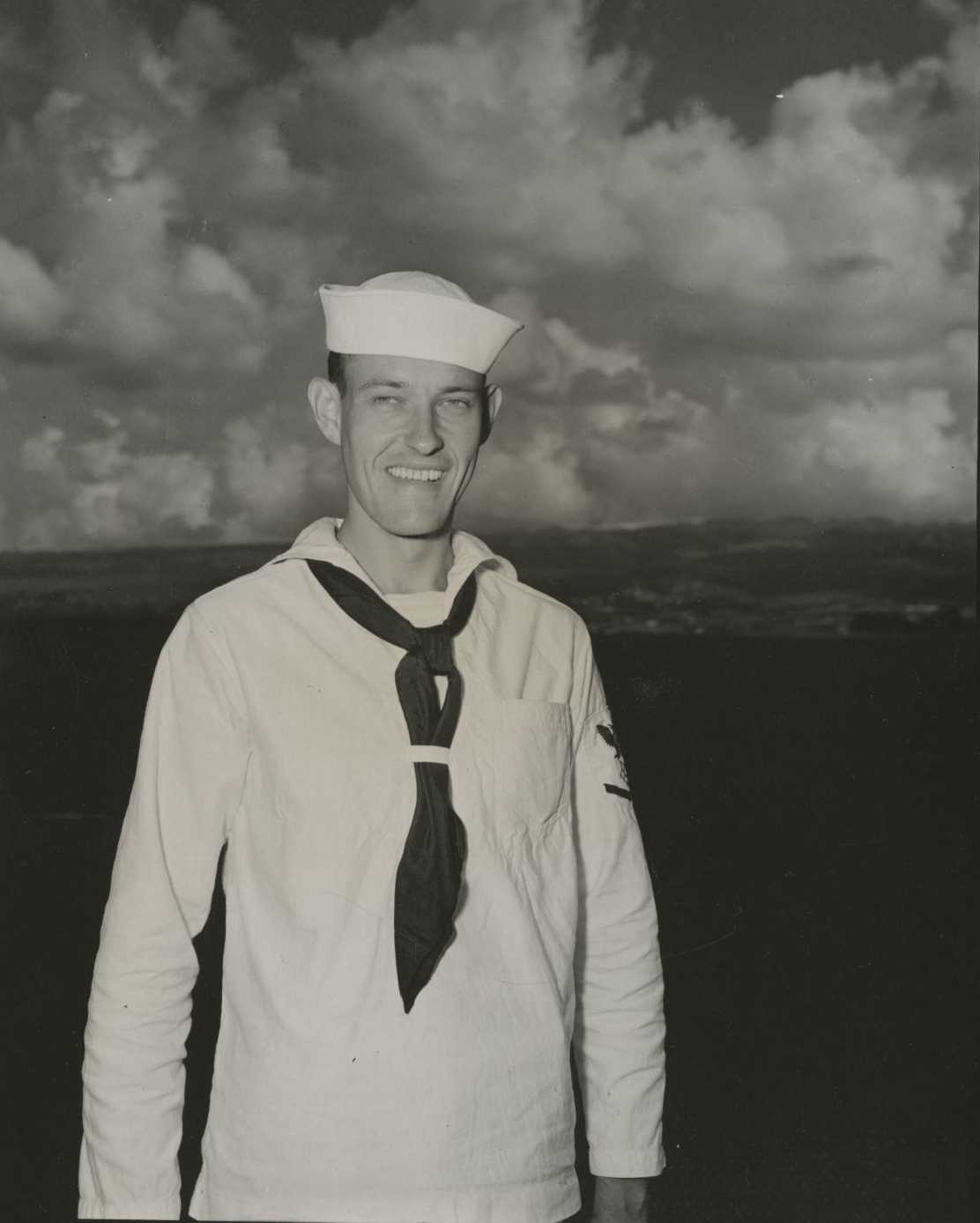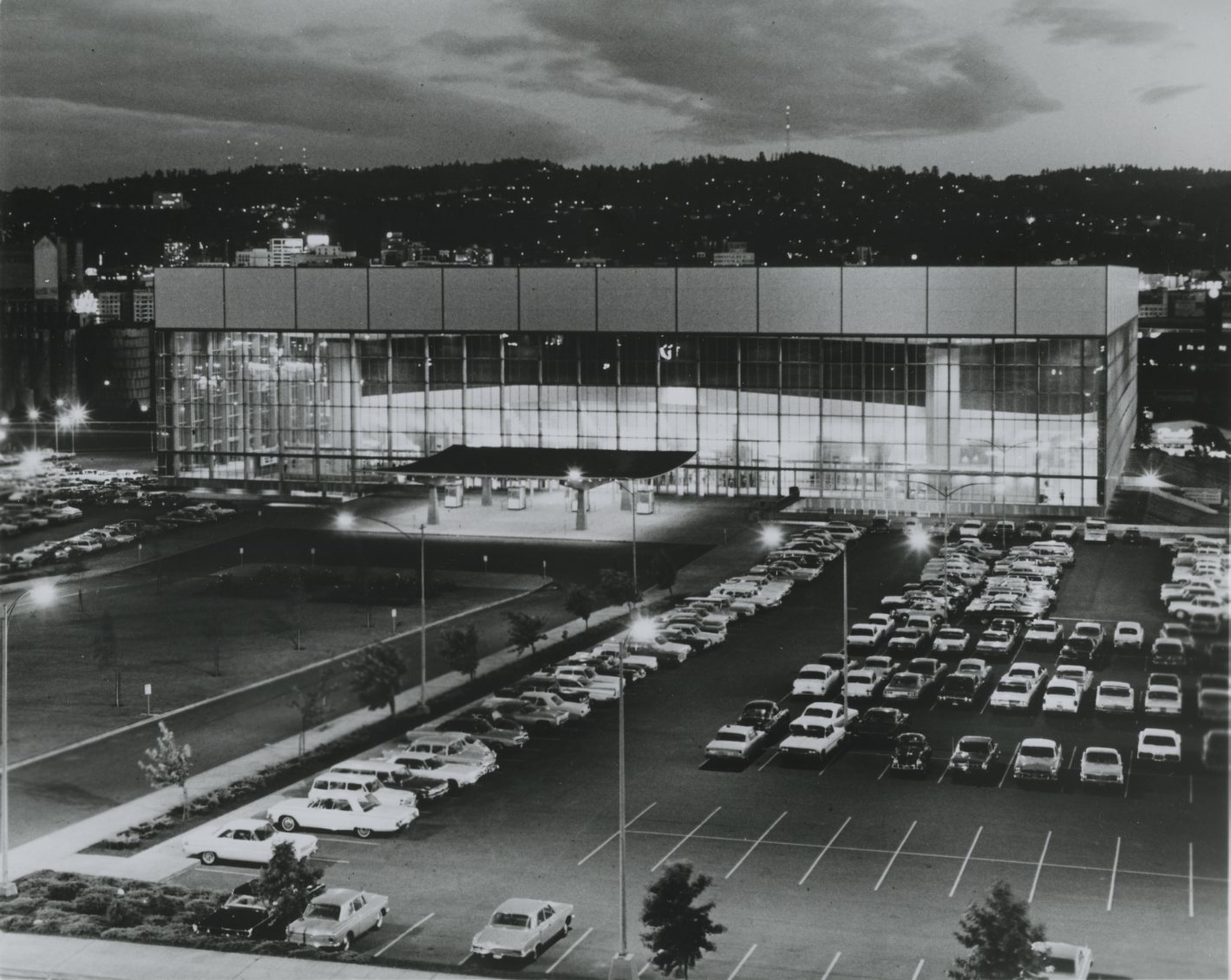Every four years from 1964 to 2004, high school students from Oregon and other western states organized into state delegations for the Oregon High School Model Presidential Nominating Convention. They researched the policy positions of one of Oregon’s political parties to prepare for deliberations that included establishing a party platform, evaluating the credentials of delegations, and nominating a candidate for president. The first conventions were organized by Sunset High School, and beginning in 1972 they were sponsored by the Oregon Council for Social Studies.
The first high school Model Presidential Nominating Convention in Oregon was held at Sunset High School in Beaverton. Similar model conventions had been held at colleges and universities, such as Washington and Lee University in Virginia, but there is no record of conventions at other American high schools. President Lyndon Johnson, a Democrat, was in office in 1964, and teachers James Barlow and Merle Cressy decided to organize a mock Republican convention because it was more likely to have a contentious nomination.
The teachers' goal was to provide students with direct experience with the political process. Sophomores, juniors, and seniors were members of the delegations, and freshmen were the floor demonstrators. The students drafted a party platform before the convention, conducted floor debates on the issues, approved the credentials of all delegations, and resolved disputes. The convention ended with a vote on the presidential nominee. Faculty organizers encouraged the delegations to cast their votes on the first ballot for favorite sons, which meant that no candidate got a majority and students could negotiate and make deals as the balloting continued.
Each convention featured speeches by Oregon officeholders and candidates. National candidates also appeared, including Robert F. Kennedy, George McGovern, Hubert Humphrey, Jesse Jackson, Jimmy Carter, Jerry Brown, George H. W. Bush, Ronald Reagan, Harold Stassen, Michael Dukakis, and Bill Clinton. After Nelson Rockefeller spoke to the student delegates in 1964, they elected him as their nominee. “We got a lift that day,” William E. Walsh, Rockefeller’s Oregon campaign chair, told the Oregonian. “The spirit of that convention infected Rockefeller so much that he galvanized all of us into enthusiastic efforts,” and he went on to win the Oregon primary that year.
In 1968, for the first and only time, there were two model conventions: a convention for Democrats at Sunset High School with only Sunset students involved, and a Republican convention at the Multnomah County Exposition Center for students from several Portland-area high schools. The event at the Expo Center established the model for future conventions, which included high schools primarily from Oregon, Washington, and California and were usually held at the Memorial Coliseum in Portland. Beginning in 1972, several thousand students participated in each convention.
The driving force behind the model conventions was James Barlow, a teacher at Sunset High School (1962–1969) and Aloha High School (1969–2005). Beginning in 1972, he was assisted by Tom Hughes, a teacher at Aloha, and Sunset teacher Bill Presley. Barlow and Hughes took care of the organization and finding speakers, while Presley worked with students on crafting a political platform. Students, trained in an optional evening class called the Metropolitan Congress on World Affairs, took charge of the convention.
Many students found the model conventions to be the best educational experience they had in high school. As Oregonian columnist Steve Duin, who participated in the 1972 convention wrote: “The Model Convention...is one of those rare learning experiences…that should be required on every academic transcript….Standing on the Coliseum floor during the five, tumultuous roll-call votes, I felt a part of history.”
The model conventions were discontinued after 2004, partly because of Barlow's retirement from teaching, but primarily because the political negotiation and multiple ballots that were highlights of the model conventions ceased to exist when state primaries expanded and nominees were known before party conventions were held.
-
![]()
Sunset High Students prepare for Model Presidential Nominating Convention, 1968.
Oregon Historical Society Research Library, Oregon Journal, photo file 94A
-
![]()
"Mock GOP Conventioneers Whoop It Up," Oregonian, May 11, 1968.
Portland Oregonian
-
![]()
Nelson Rockefeller, 1964, candidate in 1960, 1964, 1968.
Courtesy Library of Congress, Frémont, J. C., Gales And Seaton Printer, Gibbs, G., Smith, J. S. & United States Army. Corps Of Topographical Engineers Sponsor. (1844) -
![]()
Harold Stassen, candidate in every Republican presidential primary from 1944 to 1992.
Courtesy Library of Congress -
![]()
Bobby Kennedy at the University of Portland, 1968.
Oregon Historical Society Research Library, photo file 606
-
![]()
George McGovern, candidate in 1972.
Courtesy Library of Congress -
![]()
Jimmy Carter, candidate in 1976 and 1980.
Courtesy Library of Congress -
![]()
-
![]()
Jesse Jackson, candidate in 1984, 1988.
Courtesy Library of Congress -
![]()
George H. W. Bush, candidate in 1980, 1988, 1992.
Courtesy Library of Congress -
![]()
Bill Clinton, candidate in 1992, 1996.
Courtesy Library of Congress -
![]()
Sunset High School, Beaverton.
Courtesy Beaverton Public School District -
![]()
Veterans Memorial Coliseum, drawing by Skidmore, Owings, & Merrill.
Courtesy Oregon Hist. Soc. Research Lib., Orhi86463
-
![]()
"Model Convention Hears McCall on Race Issues," Oregonian, May 11, 1968.
Portland Oregonian
Documents
Related Entries
-
![Edith Starrett Green (1910-1987)]()
Edith Starrett Green (1910-1987)
Democrat Edith Starrett Green represented Oregon’s 3rd Congressional Di…
-
![Thomas William Lawson McCall (1913-1983)]()
Thomas William Lawson McCall (1913-1983)
Tom McCall, more than any leader of his era, shaped the identity of mod…
-
![Veterans Memorial Coliseum]()
Veterans Memorial Coliseum
Veterans Memorial Coliseum is a 12,000-seat arena on the east bank of t…
Map This on the Oregon History WayFinder
The Oregon History Wayfinder is an interactive map that identifies significant places, people, and events in Oregon history.
Further Reading
“Rocky’s Oregon Chair Explains Winning Political Moves.” Oregonian, May 18, 1964, p. 14.
Duin, Steve. “Politics Never Felt So Good.” Oregonian, May 8, 1988, p. D1
Mullin, Bob. “James Barlow: The World as Classroom.” Northwest Magazine, May 8, 1988, p. 17.

